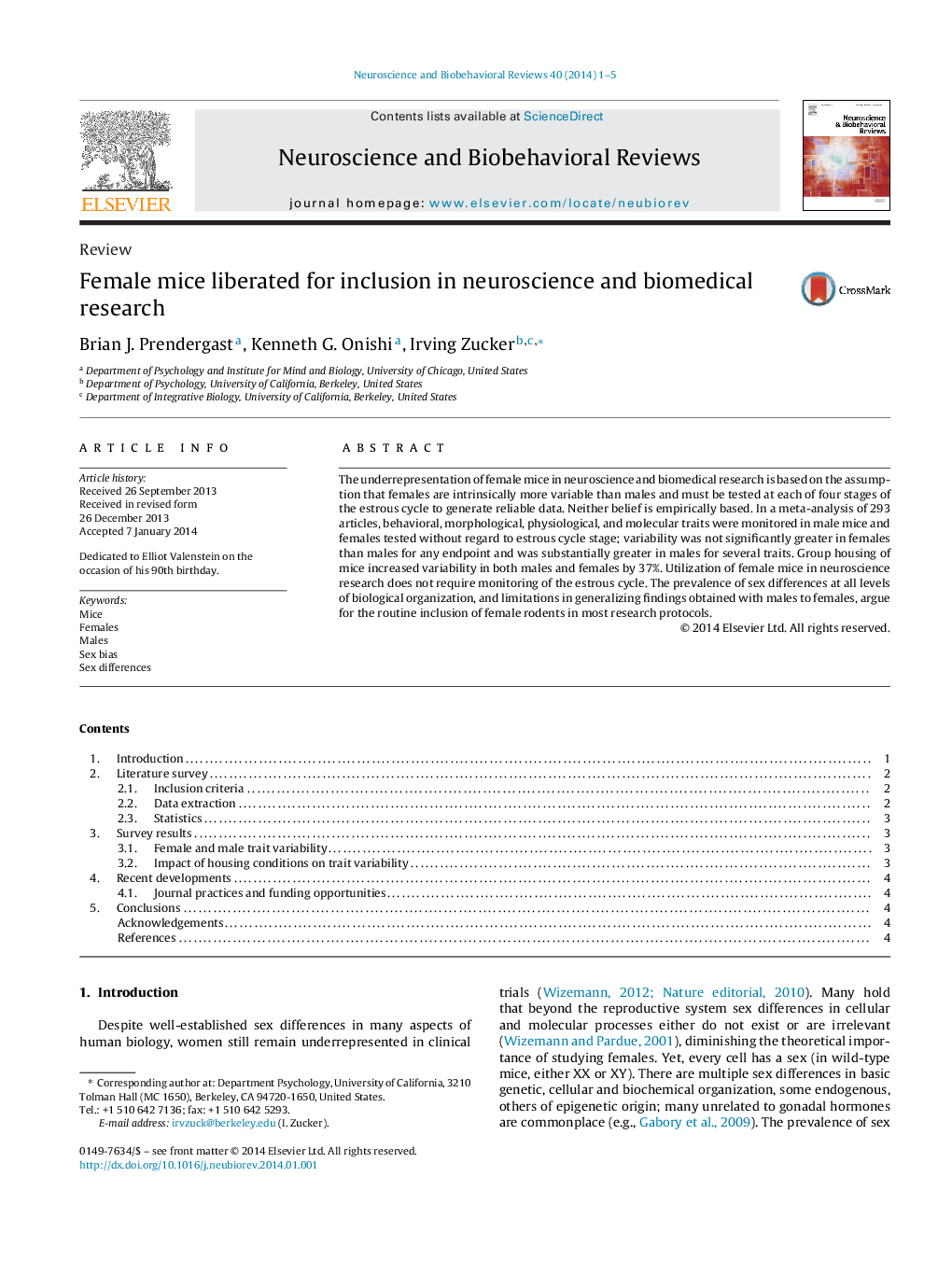| Article ID | Journal | Published Year | Pages | File Type |
|---|---|---|---|---|
| 937707 | Neuroscience & Biobehavioral Reviews | 2014 | 5 Pages |
•Female animal models are underutilized in neuroscience research.•The estrous cycle is thought to render females more variable than males.•Randomly cycling female mice were no more variable than males on any trait.•Group housing increased trait variability by 37% in both sexes.•The estrous cycle need not be monitored when utilizing female mice.•Inclusion of female mice in neuroscience research is justifiable and desirable.
The underrepresentation of female mice in neuroscience and biomedical research is based on the assumption that females are intrinsically more variable than males and must be tested at each of four stages of the estrous cycle to generate reliable data. Neither belief is empirically based. In a meta-analysis of 293 articles, behavioral, morphological, physiological, and molecular traits were monitored in male mice and females tested without regard to estrous cycle stage; variability was not significantly greater in females than males for any endpoint and was substantially greater in males for several traits. Group housing of mice increased variability in both males and females by 37%. Utilization of female mice in neuroscience research does not require monitoring of the estrous cycle. The prevalence of sex differences at all levels of biological organization, and limitations in generalizing findings obtained with males to females, argue for the routine inclusion of female rodents in most research protocols.
